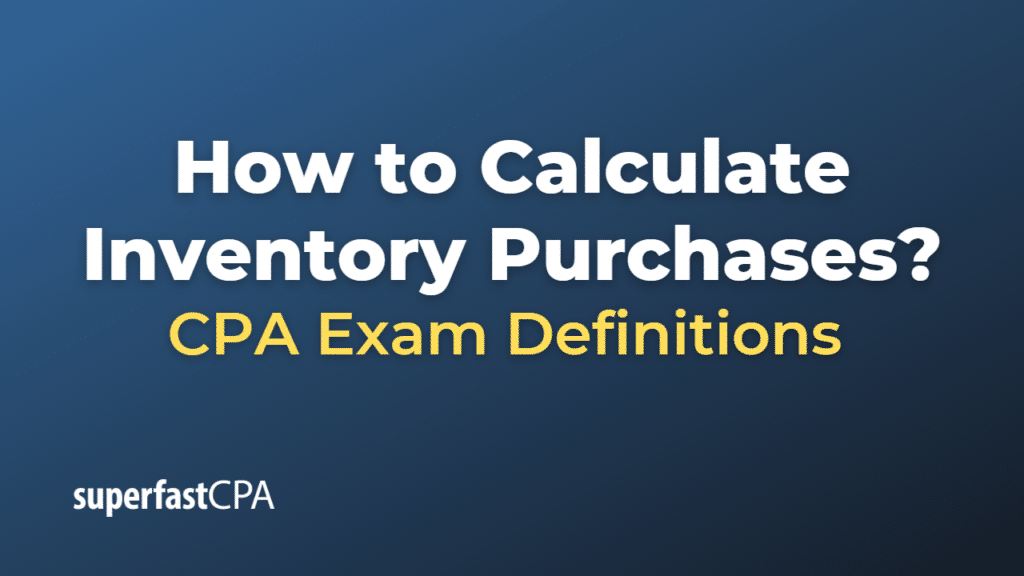How to Calculate Inventory Purchases
Calculating inventory purchases isn’t usually a straightforward process because it depends on several variables such as the starting inventory, the ending inventory, and the cost of goods sold (COGS) during the period in question. However, there is a general formula you can use:
Inventory Purchases = Cost of Goods Sold (COGS) + Ending Inventory – Beginning Inventory
Here’s how you would use the formula step by step:
- Determine the Cost of Goods Sold (COGS): COGS is the total cost of all the goods a company sold during a specific period. It includes the cost of materials and labor directly used to produce the goods. It doesn’t include indirect expenses such as distribution costs and sales force costs. This information is usually available in the company’s income statement.
- Identify the Beginning and Ending Inventory: The beginning inventory is the recorded cost of inventory at the beginning of a period. The ending inventory is the recorded cost of inventory at the end of the period. These figures are usually available in the company’s balance sheet.
- Calculate Inventory Purchases: Use the formula to calculate inventory purchases. If you sold more goods than you had in your initial inventory, the difference will be made up by the inventory you purchased.
Let’s consider an example for clarification. Suppose you have the following information:
- Beginning Inventory: $20,000
- Ending Inventory: $30,000
- COGS: $50,000
Using the formula:
Inventory Purchases = $50,000 (COGS) + $30,000 (Ending Inventory) – $20,000 (Beginning Inventory) = $60,000
This means that during this period, you purchased $60,000 worth of inventory.
This calculation gives you a better idea of how much new inventory you are purchasing within a specific time frame. Knowing your inventory purchases can help manage cash flow, budget for future inventory purchases, and strategize for sales and growth.
Example of How to Calculate Inventory Purchases
Let’s assume that you have a business selling electronics, and you want to calculate your inventory purchases for the first quarter of the year (January to March).
- Beginning Inventory (January 1): This is the total value of all the electronics you had in stock at the beginning of January. Let’s say that your beginning inventory was $120,000.
- Ending Inventory (March 31): This is the total value of all the electronics left in your stock at the end of March. Suppose that your ending inventory was $80,000.
- Cost of Goods Sold (COGS) for the First Quarter: This is the cost of all the electronics that were sold from January to March. Let’s assume your COGS was $150,000.
Now, using the formula to calculate the inventory purchases:
Inventory Purchases = COGS + Ending Inventory – Beginning Inventory
We can plug in the values:
Inventory Purchases = $150,000 (COGS) + $80,000 (Ending Inventory) – $120,000 (Beginning Inventory)
So, Inventory Purchases = $110,000.
This means that in the first quarter of the year, you purchased $110,000 worth of new electronics for your business.














